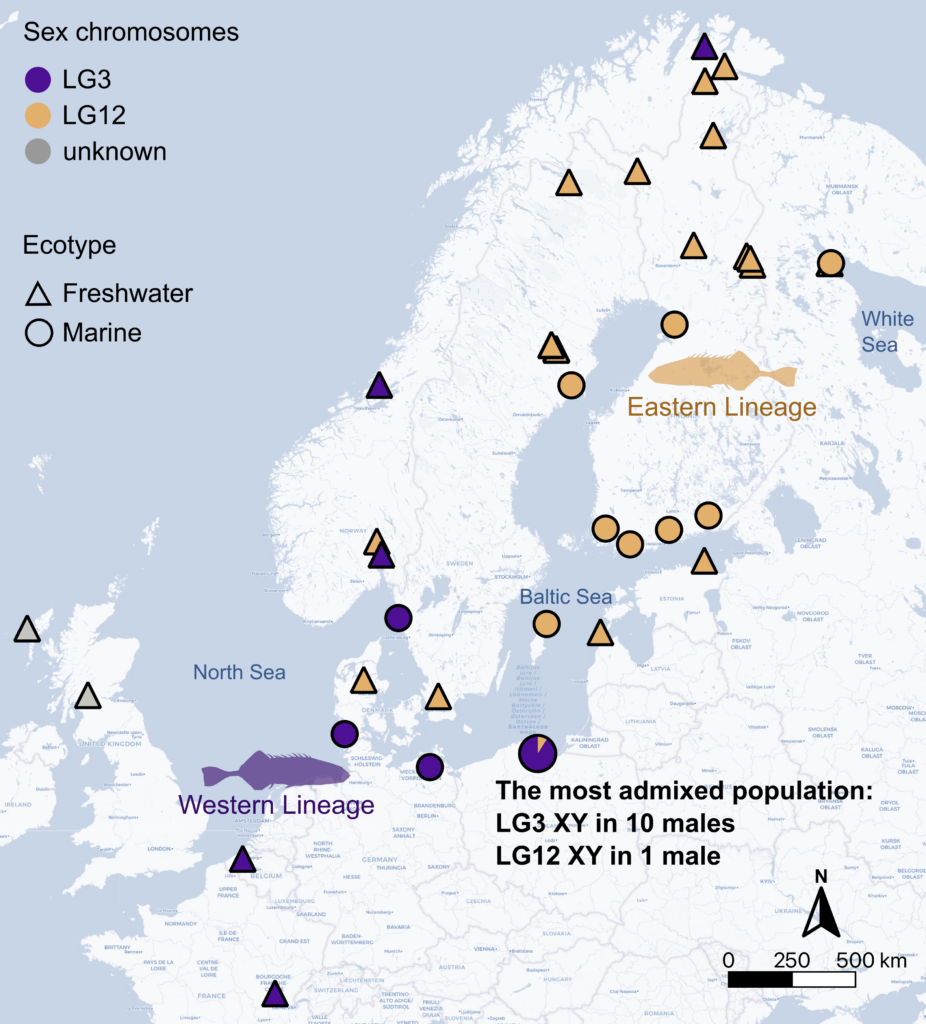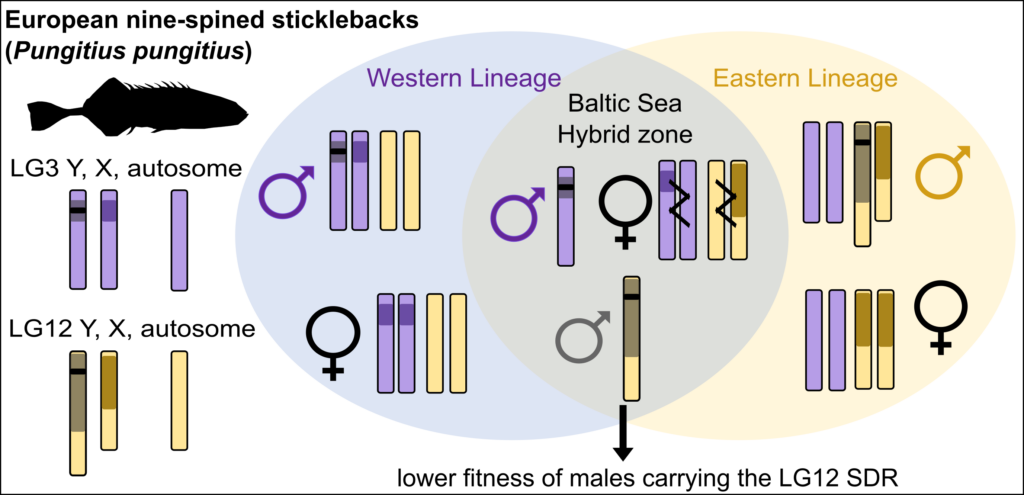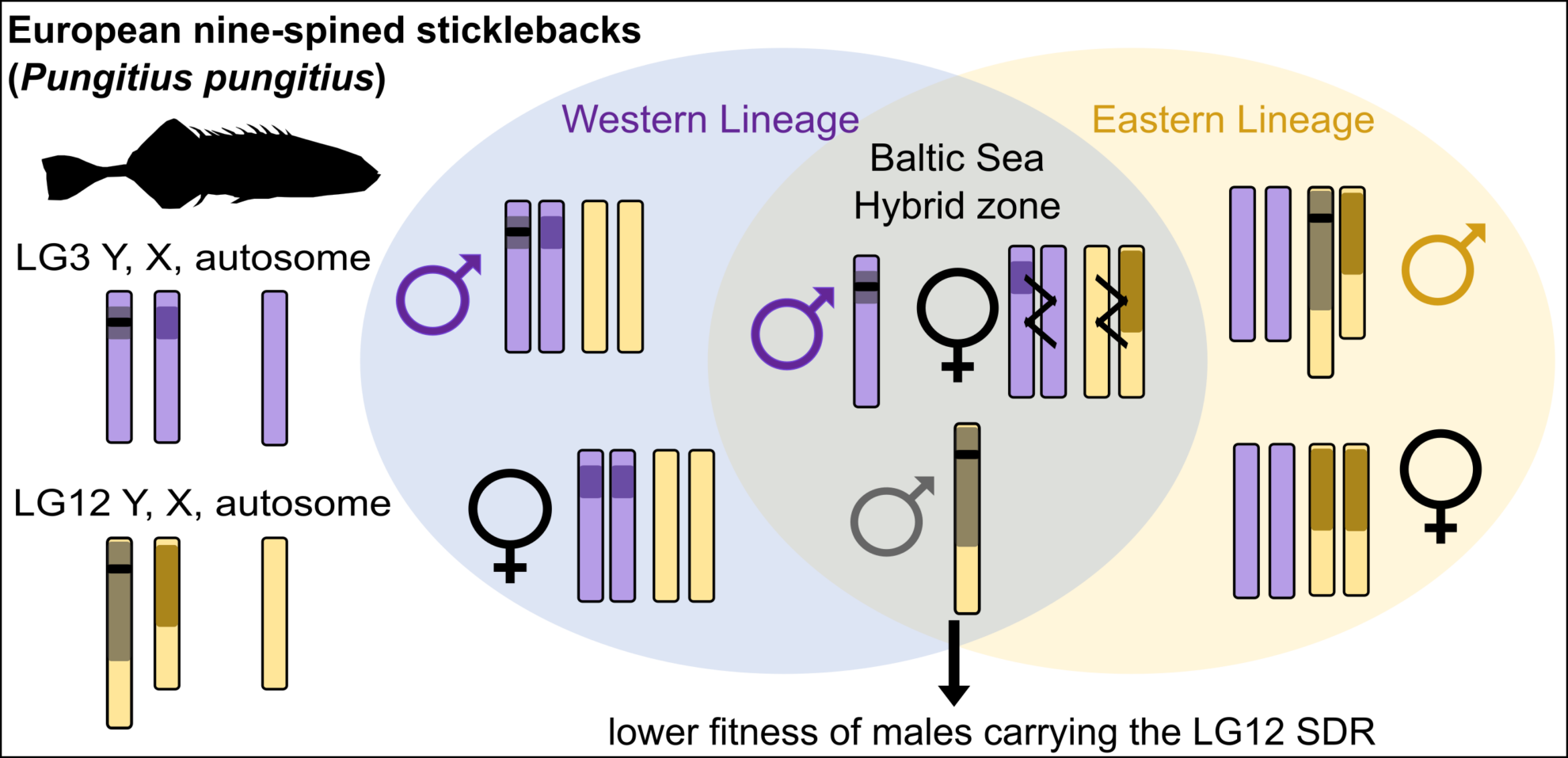In many vertebrates, sex is determined genetically by a pair of sex chromosomes (e.g., XY in males and XX in females). Sex chromosomes have been found to contribute to reproductive barrier and even promote speciation. Therefore, populations having different sex chromosomes are usually expected to not hybridize very well. However, in the nine-spined stickleback (Pungitius pungitius), populations in western and eastern Europe hybridize in the Baltic Sea despite having different pairs of sex chromosomes. Yet it has remained unknown how different sex chromosomes are sorted out in these hybrid populations.
Previous studies have shown that eastern European populations and ancestral non-European populations have morphologically different (i.e., heteromorphic) X and Y chromosomes identified as the linkage group 12 (LG12). However, LG12 is not associated with sex in western European populations whose sex chromosomes are morphologically similar (i.e., homomorphic) and remained unidentified.
In this recently published study, we identified LG3 as the homomorphic X and Y chromosomes in most western European populations, except for the UK populations which seem to have a potentially different sex-determining system. The sex-determining region of LG3 is very short (~80 kbp) compared to that of LG12 (~16.9 Mbp), which is expected given the lack of morphological differentiation between LG3 X and Y chromosomes and their relatively shorter evolutionary time. Interestingly, an inversion was indicated in the sex-determining region of the LG3 Y chromosome. Because inversions prevent chromosome recombination in their surrounding regions, they might contribute to the formation of sex-determining regions in the early evolution of sex chromosomes.

With both western and eastern sex chromosomes identified, we attempted to sort out how nine-spined sticklebacks having different sex chromosomes hybridize in their contact zone. We identified the genetic sex of 887 wild-caught individuals from 45 globally distributed populations. Almost all populations were identified with only one pair of sex chromosomes (i.e., LG12, LG3, or unknown in UK), including the admixed marine population in Germany where only LG3-determined males were identified. However, the highly admixed population in Poland was identified with both pairs of sex chromosomes but in a skewed ratio, including 10 LG3-determined males and one LG12-determined male. Genetic analyses using autosomes showed that this single LG12-determined male is not a migrant from more eastern populations. In addition, the skewed ratio of LG3 versus LG12 sex chromosomes could not be explained by sex-specific gene flow between western and eastern populations.
Therefore, the over-representation of LG3-determined males in the hybrid zone indicates relatively lower fitness of the LG12-detemined males in this region. This suggests that there might be an ongoing transition of sex chromosomes (i.e., sex chromosome turnover) in the hybrid zone where the homomorphic LG3 appears to take over the heteromorphic LG12 as sex chromosomes.

Our study thus provides an empirical example to show that hybridization between lineages having different sex chromosomes can trigger sex chromosome turnover in the hybrid zone. The direction of this turnover is consistent with the hypothesis of selection against higher deleterious mutation loads accumulated on evolutionarily older and heteromorphic sex chromosomes. Alternatively, the LG3 sex chromosomes might be favored by selection in the hybrid zone due to potential linkage with beneficial genes. Additional research is needed to test these alternative hypotheses and demonstrate the mechanisms that drive sex chromosome turnovers.
This study introduces more questions that await to be answered in future work. For example, what are the sex chromosomes in the UK populations? How did the LG3 Y chromosome evolve and how was the potential inversion involved? Are there any incompatibilities between western and eastern lineages? If so, are those incompatibilities related to different sex chromosomes? Answering these questions in nine-spined sticklebacks will also contribute to our overall understanding of sex chromosome evolution and diversity.


